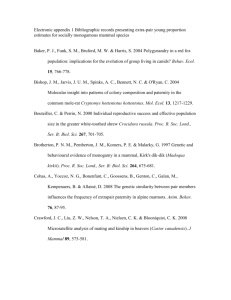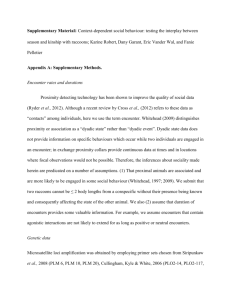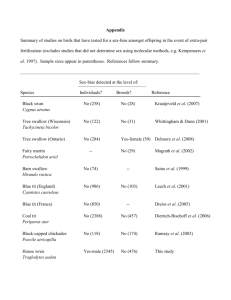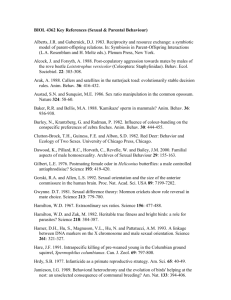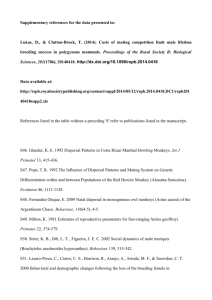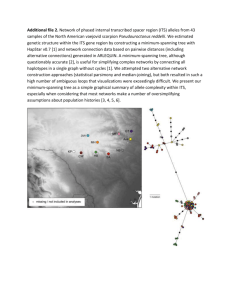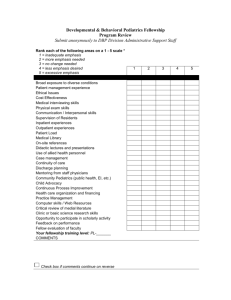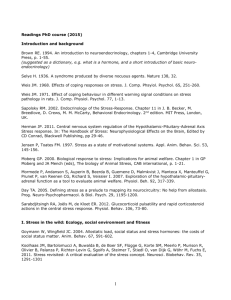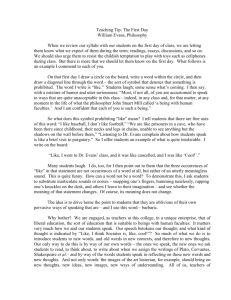Animal Communication (23 Feb. - 15 Mar.)
advertisement
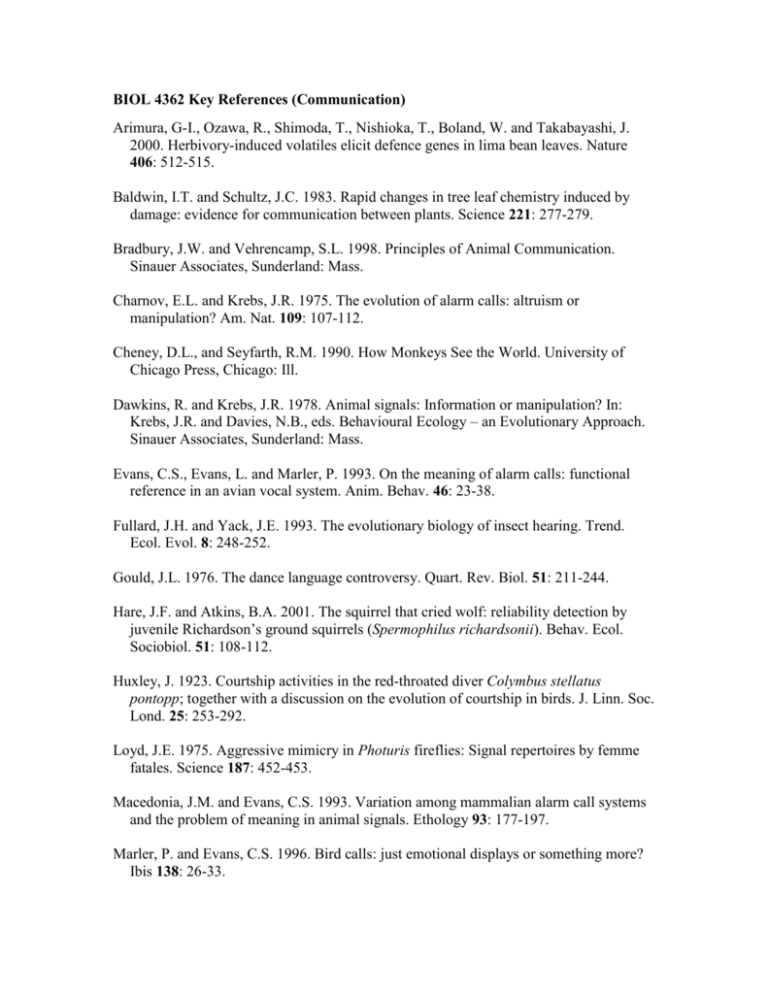
BIOL 4362 Key References (Communication) Arimura, G-I., Ozawa, R., Shimoda, T., Nishioka, T., Boland, W. and Takabayashi, J. 2000. Herbivory-induced volatiles elicit defence genes in lima bean leaves. Nature 406: 512-515. Baldwin, I.T. and Schultz, J.C. 1983. Rapid changes in tree leaf chemistry induced by damage: evidence for communication between plants. Science 221: 277-279. Bradbury, J.W. and Vehrencamp, S.L. 1998. Principles of Animal Communication. Sinauer Associates, Sunderland: Mass. Charnov, E.L. and Krebs, J.R. 1975. The evolution of alarm calls: altruism or manipulation? Am. Nat. 109: 107-112. Cheney, D.L., and Seyfarth, R.M. 1990. How Monkeys See the World. University of Chicago Press, Chicago: Ill. Dawkins, R. and Krebs, J.R. 1978. Animal signals: Information or manipulation? In: Krebs, J.R. and Davies, N.B., eds. Behavioural Ecology – an Evolutionary Approach. Sinauer Associates, Sunderland: Mass. Evans, C.S., Evans, L. and Marler, P. 1993. On the meaning of alarm calls: functional reference in an avian vocal system. Anim. Behav. 46: 23-38. Fullard, J.H. and Yack, J.E. 1993. The evolutionary biology of insect hearing. Trend. Ecol. Evol. 8: 248-252. Gould, J.L. 1976. The dance language controversy. Quart. Rev. Biol. 51: 211-244. Hare, J.F. and Atkins, B.A. 2001. The squirrel that cried wolf: reliability detection by juvenile Richardson’s ground squirrels (Spermophilus richardsonii). Behav. Ecol. Sociobiol. 51: 108-112. Huxley, J. 1923. Courtship activities in the red-throated diver Colymbus stellatus pontopp; together with a discussion on the evolution of courtship in birds. J. Linn. Soc. Lond. 25: 253-292. Loyd, J.E. 1975. Aggressive mimicry in Photuris fireflies: Signal repertoires by femme fatales. Science 187: 452-453. Macedonia, J.M. and Evans, C.S. 1993. Variation among mammalian alarm call systems and the problem of meaning in animal signals. Ethology 93: 177-197. Marler, P. and Evans, C.S. 1996. Bird calls: just emotional displays or something more? Ibis 138: 26-33. 2 McElligott, A.G. and Hayden, T.J. 2001. Postcopulatory vocalizations of fallow bucks: who is listening? Behav. Ecol. 12: 41-46. McGregor, P.K. 1993. Signaling in territorial systems: a context for individual identification ranging and eavesdropping. Phil. Trans. Roy. Soc. Lond. Biol. Sci. 340: 237-244. Rohwer, S. and Rohwer, F.C. 1978. Status signaling in Harris sparrows: experimental deceptions achieved. Anim. Behav. 26: 1012-1022. Tamura, N. 1993. Role of sound communication in mating of Malaysian Calliosciuris (Sciuridae). J. Mamm. 74: 468-476. von Frisch, K. 1967. The Dance Language and Orientation of Bees. Harvard University Press, Cambridge: Mass. Waas, J.R. 1991. The risks and benefits of signaling aggressive motivation: A study of cave-dwelling little blue penguins. Behav. Ecol. Sociobiol. 29: 139-146. Warkentin, K.J. Keeley, A.T.H. and Hare, J.F. 2001. Repetitive calls of juvenile Richardson’s ground squirrels (Spermophilus richardsonii) communicate response urgency. Can. J. Zool. 79: 569-573. Wilson, E.O. 1975. Sociobiology - The New Synthesis. Harvard University Press, Cambridge: Mass. Yack, J.E. and Fullard, J.H. 2000. Ultrasonic hearing in nocturnal butterflies. Nature 403: 265-266.
